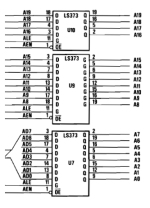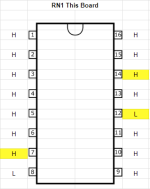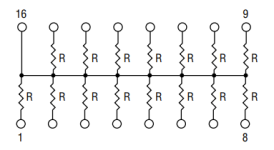Welcome to Board #1!
[Link to Original Thread / Board #3]
Here's what I know so far:
- Motherboard type 64KB-256KB
- Known good CPU inserted
- Known good RAM populated in Bank0, other banks unpopulated
- RDR Doesn't boot up, no beep, LPT says "00" and nothing more
- Booting with known good BIOS, no beep, no video
- Verified power supply
- Verified 4.77 MHz clock
- No pulses on pin 13 of the 8253 chip
Performed The 'ground I/O CH RDY' Procedure, this is what I see:
8088's READY (22) and RESET (21) pins are LOW
A0 H
A1 H
A2 H
A3 H
A4 H
A5 H
A6 H
A7 H
A8 H
A9 -
A10 L
A11 L
A12 H
A13 -
A14 -
A15 -
A16 H
A17 H
A18 H
A19 H
Where '-' appears to be high impedance (logic probe is silent)
[Link to Original Thread / Board #3]
Here's what I know so far:
- Motherboard type 64KB-256KB
- Known good CPU inserted
- Known good RAM populated in Bank0, other banks unpopulated
- RDR Doesn't boot up, no beep, LPT says "00" and nothing more
- Booting with known good BIOS, no beep, no video
- Verified power supply
- Verified 4.77 MHz clock
- No pulses on pin 13 of the 8253 chip
Performed The 'ground I/O CH RDY' Procedure, this is what I see:
8088's READY (22) and RESET (21) pins are LOW
A0 H
A1 H
A2 H
A3 H
A4 H
A5 H
A6 H
A7 H
A8 H
A9 -
A10 L
A11 L
A12 H
A13 -
A14 -
A15 -
A16 H
A17 H
A18 H
A19 H
Where '-' appears to be high impedance (logic probe is silent)
Last edited:




